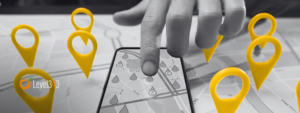Infographics are beautiful things. Not only do they serve the purpose of providing awesome eye candy, but they also bring in traffic, links, comments and other good stuff. That is, if they’re good. Because the fact of the matter is, if your infographic is good, you get good things, but if it’s not… you get meh. Worse yet, you could end up on a Top 10 Worst Infographics list (and nobody wants that).
So how do you stop from creating a masterpiece of infographic horror? Let’s look at five very common ways people kill their informative works of art.
- Using the full spectrum of color, all in one infographic. Infographics should never have the rainbow, unless, of course, the subject is about rainbows. Lots of colors can take what could have been a beautiful piece and turn it into a nightmare of color.
- Using bright, blinding colors. There’s nothing wrong with bright colors, but they should always be blended with subtle shades. Neutral colors are much less taxing on the eyes – and since you want them staring at your infographic, you don’t want it to be hard to look.
- Going font crazy. Have you ever seen an infographic with different size fonts, text so tiny you can’t read it, or multiple fonts on the page? Too much typography can be a very bad thing. In fact, it can send the reader off to another site to gain the information.
- Putting too much information too close together. In this case, you have too many elements pressed up against each other. The background doesn’t show through, and everything butts up against everything else. This ruins the flow of information and turns it into chaos.
- Using too much text. I’m not sure if this is a no-brainer or not, but an infographic isn’t about text. It’s about designed information. When you have more text than pictures, the user may lose the urge to continue examining the graphic.
Doing any one of the above can make or break an infographic, changing the way it performs in the SERPs. It’s not all bad though. In some cases, the difference between a good infographic and a bad one is whether the designer took the time to go back and tweak it.
Make Your Next Infographic Shine
If the five points above make a bad infographic, what makes a good one? The next time you finish up an infographic, before calling it done, review the above points. If you hit even one of them, it’s time to update. Here are a few ways you can make your infographic shine:
Be Picky With Your Colors
Choose a small palette, rather than the rainbow. Three colors keep it away from being monochromatic, while still allowing a little variety. In addition, making sure that the palette is made of neutral colors will also help. Neutral colors are just that. They elicit no familiarity, so they keep accidental irritation low.
Keep Your Fonts Similar
It’s tempting to get crazy with fonts, considering how many really awesome ones there are out there. It’s very tempting. However, you’ll have to resist if you want people to talk and share your site. Don’t waste your creativity on crazy fonts. Choose one, two, maybe three fonts with similar characteristics, then use those throughout.
Enjoy Whitespace
Leaving white space, or space between the elements, often makes an infographic easier to read and take in. Rather than bombard with a lot of facts, carefully plan out your infographics from top to bottom. This includes the layout. How will you share each bit of information so it fits on the page without looking broken.
Choose Sources Carefully
Just because a statistic is out on the Internet doesn’t mean it’s still relevant today. Always track down a statistic as far as you can go. For example, you might come across an article that says 25% marketers think visual statistics are going to be hot next year. Chances are, your source is outdated and you’re relying on old studies.
More Images, Less Text
Infographics are just that: informational graphics. Images, not text. Before sending your next infographic out the door, look over it again. Check to see if there’s anything else you can turn into a great graphic. Otherwise, it’s just a creatively decorated blog post.
Final Thoughts
Infographics are excellent ways to bring authority, links, and traffic to your site, but they have to be done right. By following the five points above, you’ll have a much better chance of creating a masterpiece, rather than a horror piece.
If you need help with your next infographic, contact Level343. We’ve been creating infographics for well over 20 years; let our experience go to work for you.







































